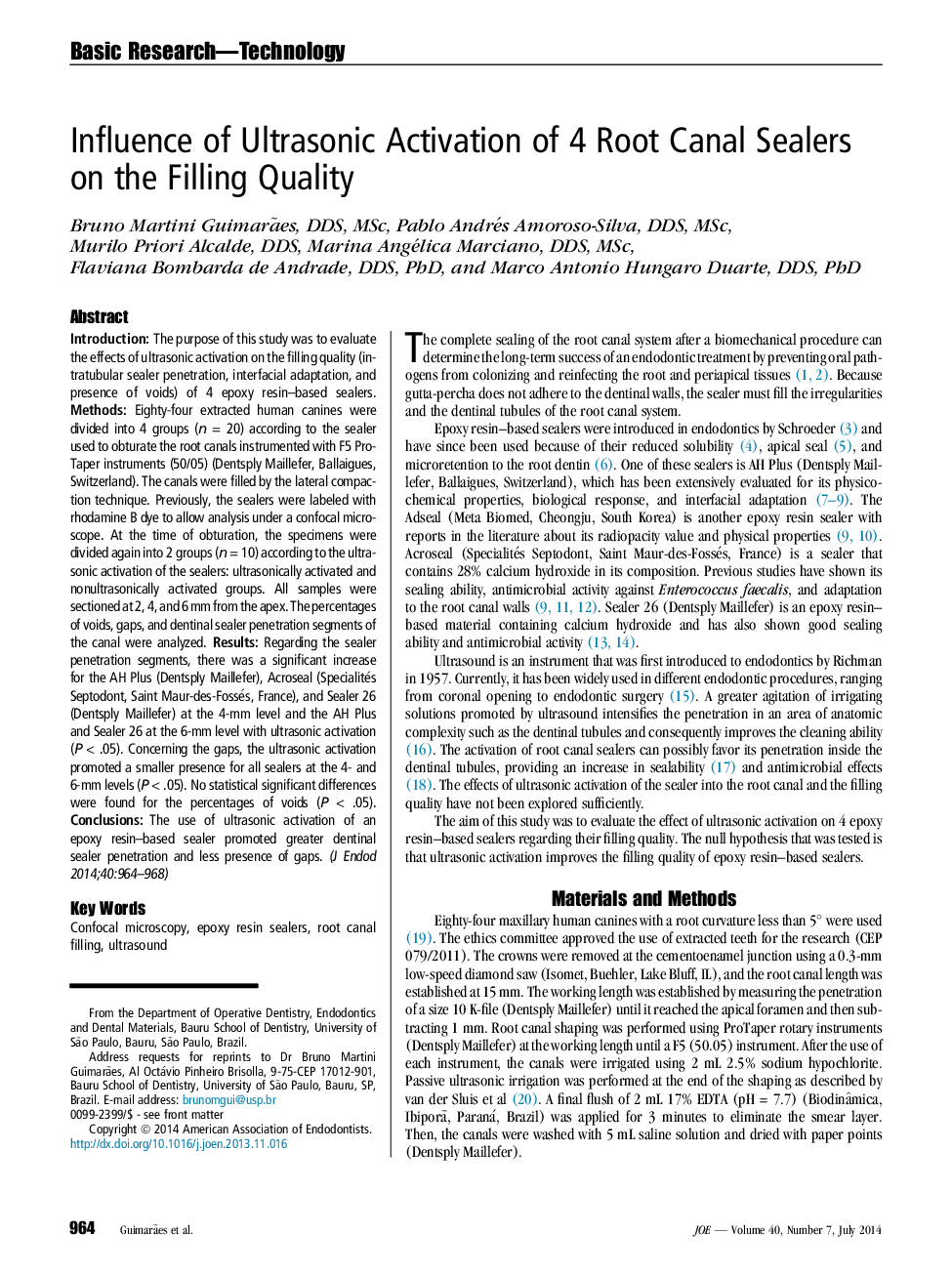| Article ID | Journal | Published Year | Pages | File Type |
|---|---|---|---|---|
| 3146818 | Journal of Endodontics | 2014 | 5 Pages |
IntroductionThe purpose of this study was to evaluate the effects of ultrasonic activation on the filling quality (intratubular sealer penetration, interfacial adaptation, and presence of voids) of 4 epoxy resin–based sealers.MethodsEighty-four extracted human canines were divided into 4 groups (n = 20) according to the sealer used to obturate the root canals instrumented with F5 ProTaper instruments (50/05) (Dentsply Maillefer, Ballaigues, Switzerland). The canals were filled by the lateral compaction technique. Previously, the sealers were labeled with rhodamine B dye to allow analysis under a confocal microscope. At the time of obturation, the specimens were divided again into 2 groups (n = 10) according to the ultrasonic activation of the sealers: ultrasonically activated and nonultrasonically activated groups. All samples were sectioned at 2, 4, and 6 mm from the apex. The percentages of voids, gaps, and dentinal sealer penetration segments of the canal were analyzed.ResultsRegarding the sealer penetration segments, there was a significant increase for the AH Plus (Dentsply Maillefer), Acroseal (Specialités Septodont, Saint Maur-des-Fossés, France), and Sealer 26 (Dentsply Maillefer) at the 4-mm level and the AH Plus and Sealer 26 at the 6-mm level with ultrasonic activation (P < .05). Concerning the gaps, the ultrasonic activation promoted a smaller presence for all sealers at the 4- and 6-mm levels (P < .05). No statistical significant differences were found for the percentages of voids (P < .05).ConclusionsThe use of ultrasonic activation of an epoxy resin–based sealer promoted greater dentinal sealer penetration and less presence of gaps.
